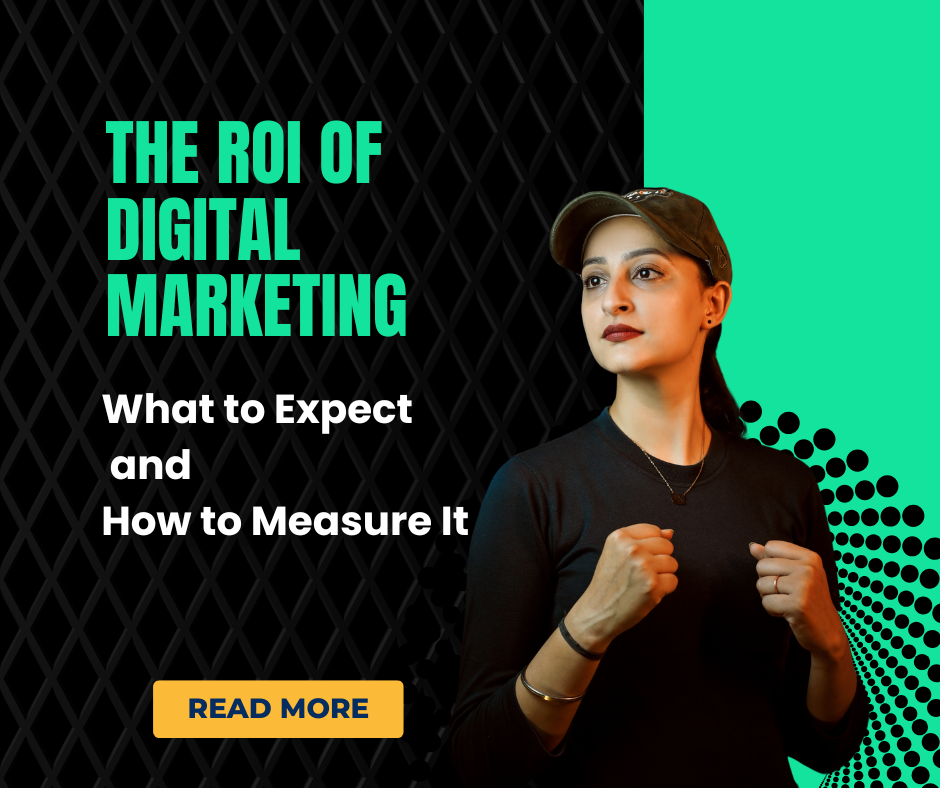Introduction
Digital marketing ROI remains one of the most crucial metrics for businesses investing in online marketing strategies. With companies spending over $786 billion on digital advertising globally, understanding and measuring return on investment has become essential for sustainable business growth. However, many marketers struggle to accurately calculate their digital marketing ROI, leading to misallocated budgets and missed opportunities for optimization.
The challenge lies not just in tracking immediate sales, but in understanding the complex customer journey that spans multiple touchpoints and channels. Modern consumers interact with brands across various platforms before making purchase decisions, making ROI measurement more sophisticated than traditional marketing approaches. This comprehensive guide will help you understand what realistic digital marketing ROI looks like, establish proper measurement frameworks, and implement proven strategies to maximize your marketing investments.
What Is Digital Marketing ROI?
Digital marketing ROI is a performance metric that measures the revenue generated from digital marketing campaigns relative to the amount invested in those campaigns. It’s calculated by dividing the net profit from marketing activities by the total marketing investment, then multiplying by 100 to get a percentage.
Unlike traditional marketing ROI, digital marketing ROI encompasses multiple channels including search engine optimization, pay-per-click advertising, social media marketing, email campaigns, content marketing, and influencer partnerships. This multi-channel approach requires sophisticated tracking and attribution models to accurately measure performance.
The complexity of digital marketing ROI stems from the interconnected nature of digital channels. A customer might discover your brand through social media, research your products via organic search, receive email nurturing sequences, and finally convert through a paid advertisement. Each touchpoint contributes to the eventual conversion, making attribution a critical component of ROI measurement.
Effective digital marketing ROI measurement goes beyond immediate sales to include long-term customer value, brand awareness improvements, and market share growth. This holistic approach provides a more accurate picture of marketing effectiveness and helps guide strategic decision-making for future campaigns.
8 Essential Steps to Measure Digital Marketing ROI Effectively
1. Define Clear Goals and KPIs
Establish specific, measurable objectives that align with your business goals. Whether focusing on lead generation, sales revenue, brand awareness, or customer retention, your KPIs should directly connect to business outcomes.
Set both short-term and long-term goals with specific timelines and benchmarks. For example, “increase qualified leads by 30% within six months” or “achieve 15% revenue growth from digital channels annually.”
2. Implement Comprehensive Tracking Systems
Deploy robust analytics tools including Google Analytics 4, conversion tracking pixels, and customer relationship management (CRM) systems. These tools provide the data foundation necessary for accurate ROI calculation.
Use UTM parameters for all marketing campaigns to track traffic sources, campaign performance, and user behavior. Implement cross-device tracking to capture the complete customer journey across multiple touchpoints.
3. Establish Attribution Models
Choose appropriate attribution models that reflect your customer journey complexity. First-click attribution credits the initial touchpoint, while last-click attribution focuses on the final interaction before conversion.
Multi-touch attribution models provide more accurate insights by distributing credit across multiple touchpoints. Consider data-driven attribution models that use machine learning to optimize credit distribution based on historical performance data.
4. Calculate Customer Lifetime Value (CLV)
Determine the total revenue value of customers acquired through digital marketing channels. CLV helps justify higher acquisition costs for valuable customers and provides context for short-term ROI calculations.
Factor in repeat purchases, average order values, and customer retention rates when calculating CLV. This metric is particularly important for subscription-based businesses and companies with high customer retention rates.
5. Track Both Direct and Indirect Conversions
Monitor immediate conversions like online purchases, lead form submissions, and phone calls. Also track indirect conversions such as in-store visits, offline purchases, and brand search increases.
Use tools like Google Analytics Enhanced Ecommerce, call tracking software, and customer surveys to capture offline conversions attributed to digital marketing efforts.
6. Implement Marketing Mix Modeling
Use statistical analysis to understand how different marketing channels contribute to overall performance. Marketing mix modeling helps identify optimal budget allocation across channels and campaigns.
Analyze historical data to understand channel interactions, seasonality effects, and external factors that influence marketing performance. This approach provides strategic insights for long-term planning.
7. Create Regular Reporting and Analysis
Develop standardized reporting processes that track key metrics consistently over time. Regular analysis helps identify trends, opportunities, and areas requiring optimization.
Use automated reporting tools to streamline data collection and focus on analysis rather than manual data compilation. Create dashboards that provide real-time insights for quick decision-making.
8. Optimize Based on Performance Data
Continuously refine your campaigns based on ROI performance data. Reallocate budgets from underperforming channels to high-ROI activities for maximum efficiency.
Test different strategies, creative approaches, and targeting options to improve overall performance. Use A/B testing and multivariate testing to validate optimization decisions.
Advanced Tools and Techniques for ROI Measurement
Analytics and Attribution Platforms
Google Analytics 4 provides comprehensive tracking capabilities with enhanced cross-device and cross-platform measurement. Advanced features include conversion modeling, audience insights, and automated machine learning attribution.
Third-party attribution platforms like Adobe Analytics, Salesforce Analytics, and HubSpot offer sophisticated tracking capabilities with advanced segmentation and customization options. These platforms excel at complex B2B attribution scenarios.
Marketing Automation and CRM Integration
Connect your marketing automation platforms with CRM systems to track lead progression through the entire sales funnel. This integration provides complete visibility into marketing-influenced revenue.
Tools like Marketo, Pardot, and HubSpot offer robust lead scoring and attribution features that help quantify marketing’s contribution to sales success. These platforms excel at nurturing lead relationships and tracking long-term customer value.
Advanced Measurement Techniques
Implement incrementality testing to measure the true impact of marketing channels. This approach compares performance in test markets with and without specific marketing activities to determine actual lift.
Use media mix modeling and econometric analysis for sophisticated budget optimization across channels. These techniques help identify optimal spending levels and channel combinations for maximum ROI.
Common Mistakes in Digital Marketing ROI Measurement
Focusing Only on Last-Click Attribution
Many businesses attribute all conversions to the final touchpoint, significantly undervaluing upper-funnel activities like content marketing and brand awareness campaigns. This approach leads to underinvestment in valuable top-of-funnel activities.
Implement multi-touch attribution models that recognize the contribution of all customer touchpoints. This approach provides a more accurate picture of channel performance and guides better budget allocation decisions.
Ignoring Offline Conversions
Digital marketing often drives offline actions like store visits, phone calls, and in-person purchases. Failing to track these conversions severely understates digital marketing effectiveness.
Use tools like Google Analytics’ store visit tracking, call tracking software, and customer surveys to capture offline conversions. Implement unique promo codes and landing pages for offline campaigns to improve attribution accuracy.
Short-Term Focus Without Long-Term Perspective
Evaluating ROI based solely on immediate conversions ignores the long-term value of brand building and customer relationships. This approach can lead to underinvestment in strategies that build sustainable competitive advantages.
Balance short-term performance metrics with long-term indicators like brand awareness, customer lifetime value, and market share growth. Consider the cumulative effect of consistent marketing efforts over time.
Inadequate Data Quality and Governance
Poor data quality, inconsistent tracking implementation, and lack of data governance protocols lead to inaccurate ROI calculations. These issues undermine confidence in measurement and decision-making.
Establish clear data governance policies, regular data quality audits, and standardized tracking protocols. Invest in proper implementation and maintenance of analytics tools to ensure accurate data collection.
Overlooking External Factors
Market conditions, seasonality, competitor actions, and economic factors influence marketing performance. Failing to account for these variables can lead to incorrect conclusions about campaign effectiveness.
Use control groups, statistical modeling, and external benchmarking to isolate marketing impact from external factors. Consider macroeconomic indicators and industry trends when analyzing performance.
Frequently Asked Questions
Q: What’s a good digital marketing ROI benchmark? A: Average digital marketing ROI varies by industry, but a 4:1 ratio ($4 revenue for every $1 spent) is considered good, while 10:1 or higher is excellent. B2B companies often see higher ROI due to larger deal sizes and longer customer relationships.
Q: How long should I wait to measure digital marketing ROI? A: Initial results can be measured within 30-90 days, but comprehensive ROI assessment typically requires 6-12 months to account for longer sales cycles and customer lifetime value development.
Q: Which digital marketing channels typically provide the highest ROI? A: Email marketing and SEO often deliver the highest ROI due to low ongoing costs and compound benefits. However, optimal channel mix depends on your target audience, industry, and business model.
Q: How do I measure ROI for brand awareness campaigns? A: Use metrics like brand search volume increases, social media engagement, website traffic growth, and brand sentiment surveys. Consider assisted conversions and view-through conversions for more comprehensive measurement.
Conclusion
Measuring digital marketing ROI effectively requires a strategic approach that goes beyond simple revenue calculations. Success depends on implementing comprehensive tracking systems, choosing appropriate attribution models, and maintaining a long-term perspective on marketing investments. The key is balancing immediate performance metrics with long-term value indicators like customer lifetime value and brand equity.
Remember that digital marketing ROI measurement is an ongoing process that requires continuous refinement and optimization. As digital channels evolve and customer behavior changes, your measurement approaches must adapt accordingly. Focus on building robust measurement frameworks that provide actionable insights for strategic decision-making.
The businesses that excel at digital marketing ROI measurement will have significant competitive advantages in resource allocation, campaign optimization, and strategic planning. Start with the fundamentals outlined in this guide, then gradually implement more sophisticated measurement techniques as your capabilities and data quality improve.
For comprehensive digital marketing benchmarks and industry insights, visit the HubSpot State of Marketing Report for detailed ROI data and performance metrics across industries.
Small Business Social Media Mistakes: Top 7 Costly Errors to Avoid in 2025 Read More.


